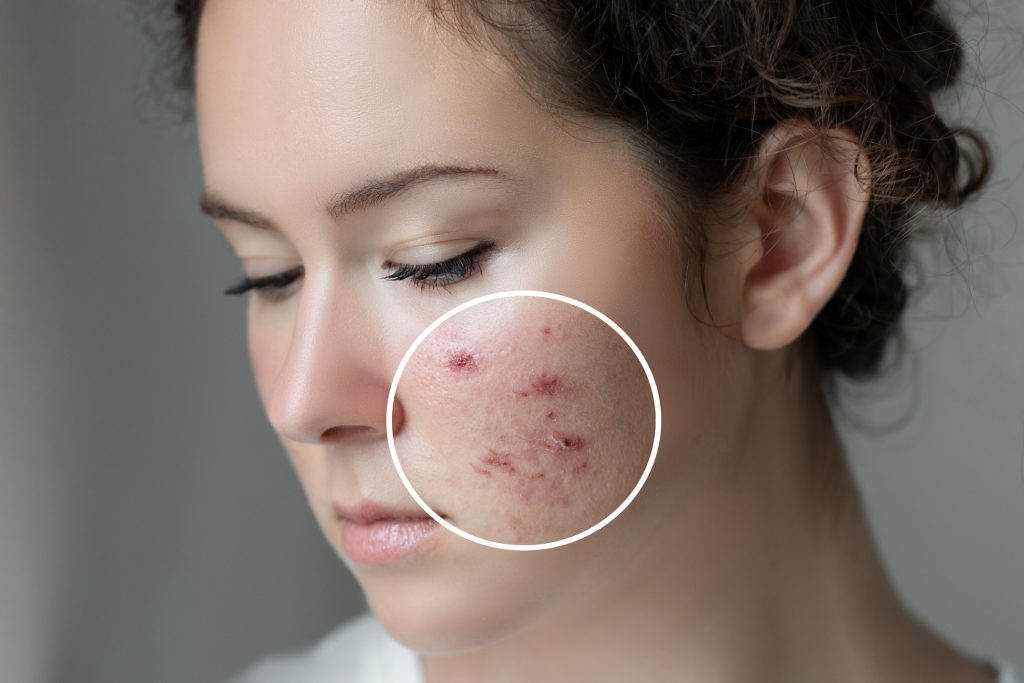Cutibacterium acnes can be engineered to produce molecules that treat acne, a new study suggests.
For the study, which is published in Nature Biotechnology, researchers successfully edited the genome of Cutibacterium acnes to secrete and produce NGAL protein known to be a mediator of the acne drug, isotretinoin, which has been shown to reduce sebum by inducing the death of sebocytes. The engineered bacterium has been validated in skin cell lines and its delivery has been validated in mice.
“We have developed a topical therapy with a targeted approach, using what nature already has. We engineered a bacterium that lives in the skin and made it produce what our skin needs. Here, we focused on treating acne, but this platform can be extended to several other indications”, says study author Nastassia Knödlseder, PhD, a Postdoctoral Researcher in the Universitat Pompeu Fabra Translational Synthetic Biology Laboratory in Barcelona, in a news release.
“Until now, C. acnes was considered an intractable bacterium. It was incredibly difficult to introduce DNA and get proteins produced or secreted from an element inserted into its genome”, explains Knödlseder.
However, since C. acnes seems an attractive synthetic biology chassis for treating skin diseases due to its niche environment deep inside hair follicles -practically where sebum is released-, its importance for skin homeostasis, its close contact with relevant therapeutic targets, plus the fact that it has been shown to successfully engraft when applied to human skin, led them to insist on editing the genome of this non-engineerable bacterium.
To edit the genome of C. acnes, the research team focused on improving DNA delivery to the cell, DNA stability inside the cell, and gene expression. The scientists have considered regulatory measures by developing a biocontainment strategy to avoid the use of elements that generate regulatory concerns such as mobile genetic elements, plasmids, or antibiotic resistance. Hence, the resulting synthetic bacterium has safety features to enable “real-life application” and consider it for future human therapeutics.
Synthetic C. acnes can secrete and produce NGAL to modulate sebum production in cell lines. When applied to the skin of mice, they engraft, live, and produce the protein. However, mice skin has more hair, is looser, has less lipidsand a different sweat mechanism than human skin. Now, researchers need an alternative model such as 3D skin.
The Bigger Picture
“We have developed a technology platform that opens the door to editing any bacteria to treat multiple diseases. We are now focused on using C. acnes to treat acne, but we can deliver genetic circuits to create smart microbes for applications related to skin sensing, or immune modulation”, points out study author Marc Güell, PhD, a research professor at Pompeu Fabra University.
This research will continue under the European Project ‘SkinDev’ in which scientists from the Translational Synthetic Biology lab together with its partners will engineer C. acnes to address atopic dermatitis.
Although any living therapeutics strategy should be validated individually, the researchers are optimistic because non-engineered C. acnes has already been tested on the skin of patients safely and effectively.


